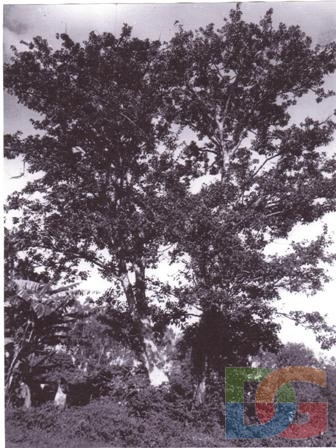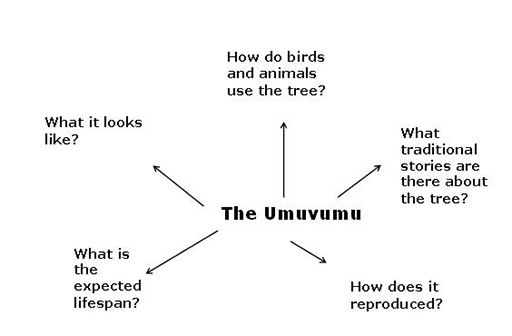Resource 5: Text on the umuvumu
![]() Teacher resource for planning or adapting to use with pupils
Teacher resource for planning or adapting to use with pupils
Before starting the Key Activity, you may wish to use Resource 1 as an example and discuss with your pupils how sub-headings can summarise key points.

The umuvumu
The umuvumu is a very wonderful tree. Some people think of the umuvumu as a sacred tree. Kings and important people in Rwanda made sure that umuvumu were planted around the compound. The scientific name for the umuvumu is Ficus thonningii. Ordinary people used the tree as mainstay poles to the entrance and exit gates of their cattle enclosures.
The umuvumu is different from other trees. Many trees use birds and bees to carry pollen grains from one tree to another so that the trees can be fertilised and make new flowers, fruits or nuts. But some plants and trees such as the umuvumu have a remarkable ability to reproduce asexually. If a branch is cut and planted it grows into a very huge tree.
The imivumu live for a long time. There are some imivumu that were planted in the 19th century and these are now tourist attractions: Ibigabiro bya Humure in the eastern region and Ikimana cya Kaduha in the southern region, for example.
The umuvumu tree has very many uses: many farmers and people with cattle use the umuvumu as a shade-providing tree. The farmers plant many imivumu on the farm to shelter them against the scorching heat of the sun; the trunk of a huge umuvumu, with its shady leaves, can provide shelter from the rain. The trunk also has domestic uses. Wooden troughs called ‘imivure’ for holding of local banana brews or providing drinking for cows were carved out of imivumu trunks. Utensils like ‘imbehe’ wooden bowls and ‘ibyansi’ wooden milk jars were also made from imivumu trunks. From branches carvers could make wooden spoons called indosho as well as millet flour mingling sticks called imyuko. The leaves were a delicacy for domestic animals that had given birth to young ones – especially goats! The bark of the umuvumu is used to make crafts. Hats and handbags can be made from bark cloth. Before the coming of the Europeans to Rwanda, bark cloth was used as clothing for many people. The bark cloth was called impuzu in Kinyarwanda.
Suggested sub-headings for The umuvumu text
Paragraph 1: What a umuvumu looks like
Paragraph 2: How it reproduces
Paragraph 3: Lifespan
Paragraphs 4, 5, 6: Uses of the umuvumu
Paragraphs 7, 8: Stories and beliefs about imivumu
A mind map summary of The umuvumu

Resource 4: A pie chart



